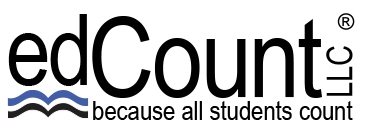At edCount, we believe that evaluation is a critical component of any education system. States and districts that take the time to examine how their instructional systems are functioning – from the way the school environment or day is laid out to the way instruction reflects academic content standards – can use this valuable information to revise and improve these systems to better meet their goals.
For clients that are shifting to new academic content standards, edCount conducts gap analyses or cross-walk studies to identify content overlap between the two sets of standards. The findings from these studies may, in turn, identify or require necessary changes to curriculum or other instructional practices, to ensure that these continue to reflect the knowledge, skills, and abilities that should be prioritized for teaching and learning. edCount also helps clients evaluate how well their existing curricula and content standards align with one another to ensure coherence in the instructional system.
For clients that wish to examine the contexts in which standards and curricula are used, edCount conducts studies of school culture and educational environments to provide richer and more comprehensive information about how the structure of these environments may affect teaching practice or learning outcomes.
edCount @Work
Gap Analysis: Comparing the Common Core State Standards and State Content Standards
edCount designed and conducted gap analysis studies for the Puerto Rico Department of Education (PRDE) and the Laurent Clerc National Deaf Education Center (Clerc Center) to facilitate their transition to new standards based on the Common Core State Standards (CCSS).
For the PRDE, edCount conducted a study to compare: 1) the PRDE Spanish language arts content standards and grade-level expectations to the CCSS for English language arts/literacy in grades 3-8 and 11, and 2) the PRDE mathematics content standards and grade-level expectations in grades 3-8 and 11 to the CCSS for mathematics. The purpose of this study was to determine the degree to which the CCSS address the academic content covered in the PRDE content standards and to determine the overall quality of the PRDE content standards compared to the CCSS.
When the Laurent Clerc National Deaf Education Center first adopted academic content standards and assessments, it partnered with a state and adopted their materials for use with the Clerc Center’s students. When the Clerc Center transitioned to the Common Core State Standards (CCSS), edCount created a summary of the relationships between the Clerc Center’s state-aligned standards and the CCSS. Findings from this analysis allowed the school leaders to make informed decisions about necessary changes to curriculum and instruction to support a smooth and successful transition.
